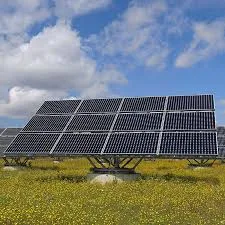solar panel voltage
Understanding Solar Panel Voltage Key Factors and Insights
Solar panels have revolutionized the way we harness energy from the sun, converting sunlight into electricity through the photovoltaic effect. One critical aspect to consider when working with solar panel systems is their voltage characteristics. Understanding solar panel voltage is essential for optimizing system performance and ensuring compatibility with various components.
What is Solar Panel Voltage?
Solar panel voltage refers to the electrical potential produced by the solar cells within the panel. It is typically measured in volts (V) and can vary based on several factors, including the type of solar panel, environmental conditions, and the configuration of the solar power system. Most residential solar panels operate at a nominal voltage of around 30 to 40 volts per panel under standard test conditions. However, the voltage can fluctuate based on factors such as temperature and sunlight intensity.
Factors Affecting Solar Panel Voltage
1. Temperature Solar panel performance is closely linked to temperature. As temperature increases, the voltage output of a solar panel tends to decrease. This phenomenon is known as temperature coefficient, which indicates how much the voltage drops for every degree Celsius increase in temperature. Understanding this relationship is vital for system design, especially in hotter climates.
solar panel voltage

2. Sunlight Intensity The amount of sunlight striking the panels directly influences the voltage output. On sunny days, when light intensity is at its peak, solar panels generate higher voltage. Conversely, during cloudy or rainy conditions, the voltage may significantly drop, illustrating the need for energy storage systems to manage energy availability during varying weather conditions.
3. Panel Configuration The way solar panels are connected, either in series or parallel, affects the overall voltage of the system. When panels are connected in series, their voltages add up, leading to a higher total voltage output. In contrast, connecting panels in parallel maintains the same voltage while increasing the system’s overall current capacity. Understanding these configurations allows for better system design tailored to specific energy needs.
Importance of Matching Voltage
When integrating solar panels into a larger solar power system, it is vital to match the voltage of the panels with that of the inverter and battery storage systems. Mismatch can lead to inefficiencies or even damage to components. Inverters are designed to convert the DC output from solar panels into AC for household use or grid connection, and they typically have a specified input voltage range. Ensuring that the solar panel voltage aligns with this range is crucial for optimal operation.
Conclusion
In conclusion, understanding solar panel voltage is essential for anyone engaged in solar energy systems, from homeowners to industry professionals. Key factors such as temperature, sunlight intensity, and panel configuration play significant roles in determining the voltage output of solar panels. By ensuring proper voltage matching with system components, users can optimize energy production and ensure the longevity and efficiency of their solar power systems. As the world increasingly turns to renewable energy, mastering the intricacies of solar panel voltage will be vital for harnessing the full potential of solar energy.
-
Unlocking Energy Freedom with the Off Grid Solar InverterNewsJun.06,2025
-
Unlock More Solar Power with a High-Efficiency Bifacial Solar PanelNewsJun.06,2025
-
Power Your Future with High-Efficiency Monocrystalline Solar PanelsNewsJun.06,2025
-
Next-Gen Solar Power Starts with Micro Solar InvertersNewsJun.06,2025
-
Harnessing Peak Efficiency with the On Grid Solar InverterNewsJun.06,2025
-
Discover Unmatched Efficiency with the Latest String Solar InverterNewsJun.06,2025







